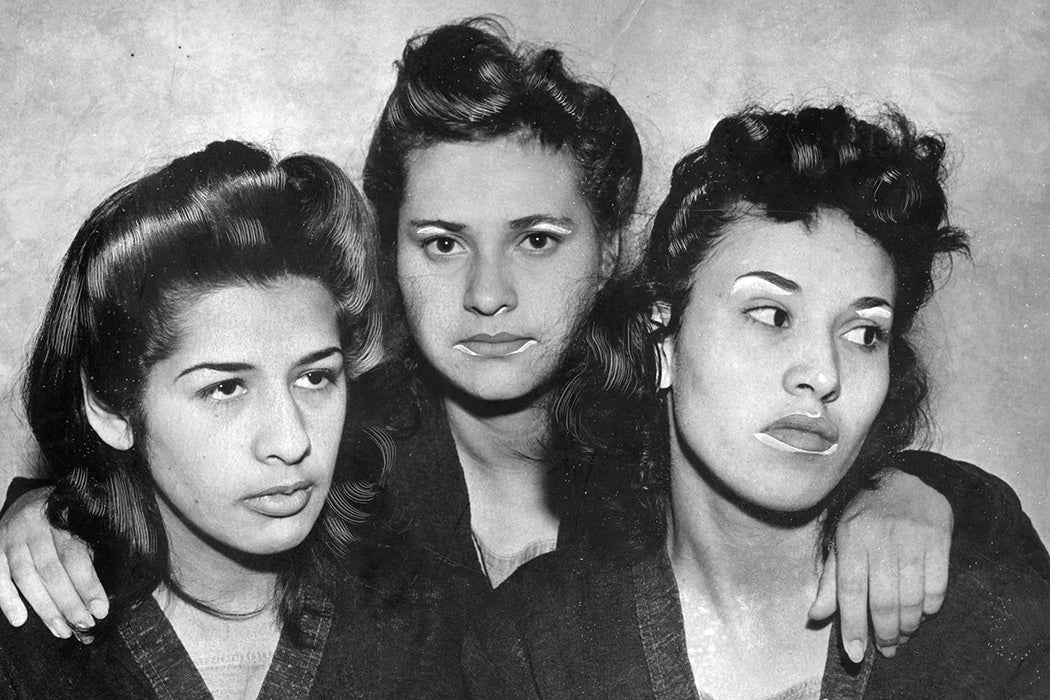In World War II-era Los Angeles, some Mexican American teenage boys and young men took on the flashy zoot suit-wearing persona of the “pachuco”—and became a target for law enforcement and white vigilantes. And, as historian Elizabeth R. Escobedo writes, many of their female counterparts did something similar. They became known to authorities and in the media as “pachucas,” a term some of them adopted with pride.
Escobedo notes that, prior to the 1940s, Mexican American women primarily used clothes and cosmetics to look more “American,” including adopting bleach creams and hair dyes. Pachucas developed new beauty standards. They often wore their own knee-length zoot suits, along with makeup and accessories that defied the understated, feminine fashion and makeup promoted by mainstream culture.
“Flashy and ostentatious, their shared adoption of exaggerated pompadours, overstated lipstick, and short skirts visibly signified a sense of belonging to a distinctly Mexican American subculture,” Escobedo writes.
The term pachuca had an association with gang activity, but the vast majority of girls and women who adopted these fashions were simply playing with an edgy look. When they did get in trouble, it was most often for offenses like staying out too late or associating with “undesirable” companions. However, authorities were often suspicious of pachuca culture. Supervisors of juvenile detention facilities often complained that pachuca girls in their custody were overly concerned with a sense of racial persecution and too eager to speak Spanish or otherwise flaunt efforts to assimilate them to white American culture.
Escobedo highlights the case of Eva Flores, a zoot suit-clad fifteen-year-old who was sent to a reform school after being accused of minor crimes like intoxication and petty theft. There, the superintendent said, the teenager stirred up “a race feeling on campus,” encouraging Black and Mexican American girls to talk amongst each other about their grievances. “She simply was ‘dynamite’ on the campus and in the short time we had her, [Eva] had all the Mexican and Negro girls surly, impudent and race conscious.”
Weekly Newsletter
Anglo officials and media presented female zoot suiters as a distinctly Mexican American problem. But many first-generation Mexican immigrants saw the styles their daughters were adopting as a sign of dangerous contamination by American values. They worried about the seductions of wartime dance halls and movie theaters, and about the difficulties of supervising teenage girls while many family members were busy with the war effort.
Escobado notes that this culture clash wasn’t unique to immigrant communities. Wartime opportunities allowed many girls and women across the country to try out new social identities. Factory jobs provided a venue for socializing with other young people, and some used their earnings to buy new clothes and makeup of their own choosing. In a way, the widespread anxiety about pachucas was just one example of a broader concern that women who had tasted more freedom during the war effort wouldn’t go back to the way things were before.







